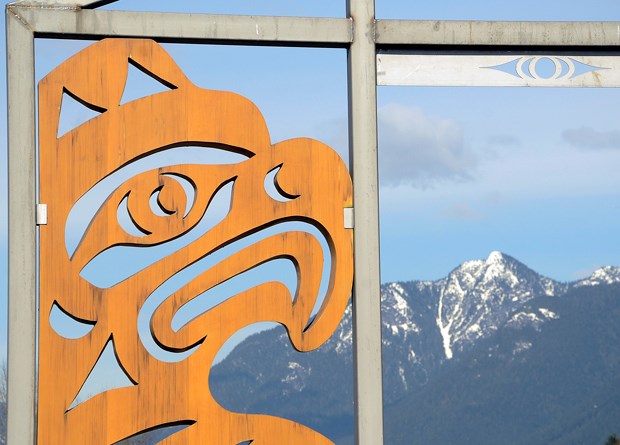The Squamish First Nation is putting everyone on notice. The Woodfibre LNG proposal for Howe Sound isn’t going to be approved or rejected without them first having their say.
The nation is running its own environmental assessment parallel to the one run by Woodfibre LNG with the federal and provincial governments.
“We weren’t satisfied with the environmental assessment process. It didn’t adequately look at issues that were important to the nation, such as rights and title and other interests that we have,” said Squamish Nation Chief Ian Campbell.
FortisBC is looking to build a natural gas pipeline through Squamish Nation territory to a Woodfibre LNG's proposed $1.6-billion export plant on a site originally known as Swig’a’t (pronounced Sway Ott) in the Squamish language.
Under the Squamish process, technicians hired by the nation will have access to all technical reports made available to the province to run their own analysis. Campbell said the final reports will be due in mid-April.
“Then we can look at how do our findings either relate to the (environmental assessment) findings? Or are there mitigation measures that we can seek with the proponents as well as with the province?
And we can figure out is this something the Squamish Nation can support?” Campbell said.
The nation has been holding a series of community meetings with its members, allowing them to learn about the proposal and put forward their concerns.
“It’s sort of a hot topic right now. The members of the Squamish are pretty acute in asking a lot of really important questions,” he said.
Until the Squamish Nation has seen the final reports and consulted with its members about the environmental and economic impacts of Woodfibre LNG’s plan, all options are on the table, Campbell said.
“One of our foremost desires is to see the revitalization of the environment. We have herring biomass coming into the sound, porpoises and larger orcas and grey whales,” he said. “That’s something we haven’t seen for many decades. Are these types of operations compatible with that vision to see a revitalization of the Salish Sea? Well, we certainly hope so and if not, that’s something we’re going to have to address — not only on the Squamish (Nation’s) behalf but really on behalf of the region.”
Outside groups, whether they’re environmentalists or businesses, tend to lean on First Nations to support their cause, which, Campbell said, runs contrary to the principle of self-governance.
“We won’t allow outsiders, whether they support the pipeline or oppose it, to decide for us,” he said.



